The leg press is a machine that is very similar to the squat and is a great way to improve your leg strength. Although this is generally a quad dominant exercise, you will also be working your hamstrings, glutes and calf muscles and can adjust the exercise to target different muscles as we will look at a little later.
If you are unable to squat for whatever reason then the leg press is a great alternative and gives a lot more support than the standard but more technical squat, meaning it is less likely to go wrong or cause injury.
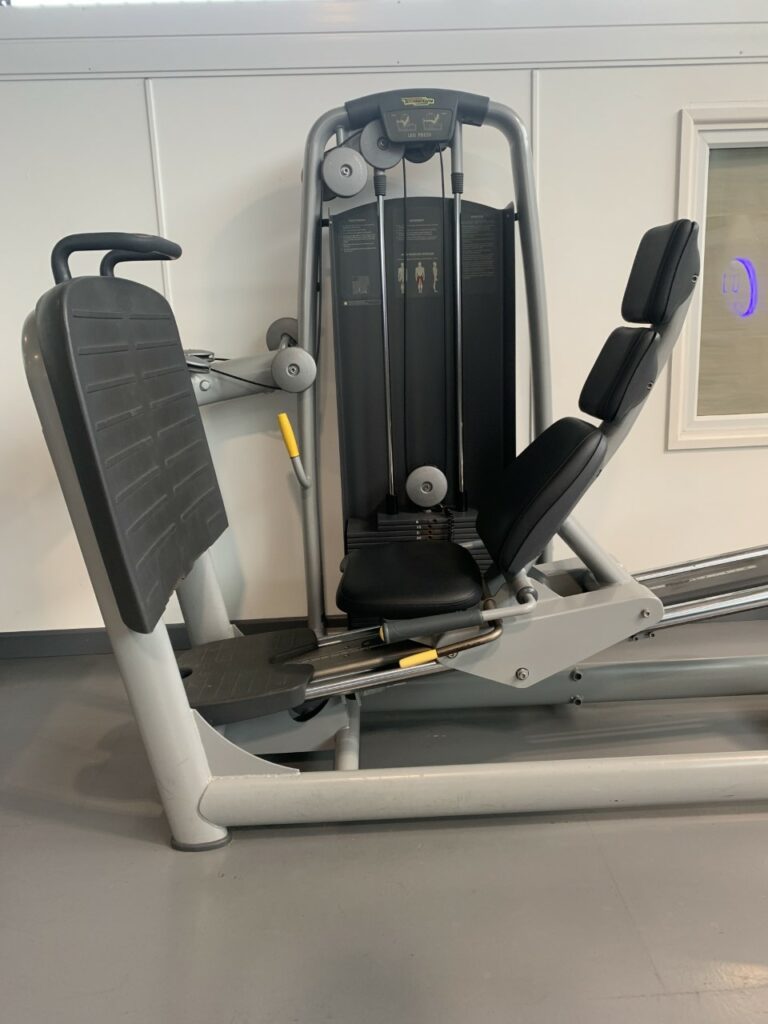
Leg press vs Squat
The leg press gives you a lot more stability than a squat as you are in a seated position so there is less focus on your core. The weight being loaded onto your feet also reduces the load going through your spine. Both reasons mean it is more leg focussed as opposed to a full body exercise so they are generally less fatiguing than a squat and is often the reason why you’ll find you can push more weight on the leg press than when performing a squat. It can be beneficial to add the leg press into your training after you have squatted as an accessory so that you can add more weight to the muscles to work on strength but whilst not having to worry about stability.
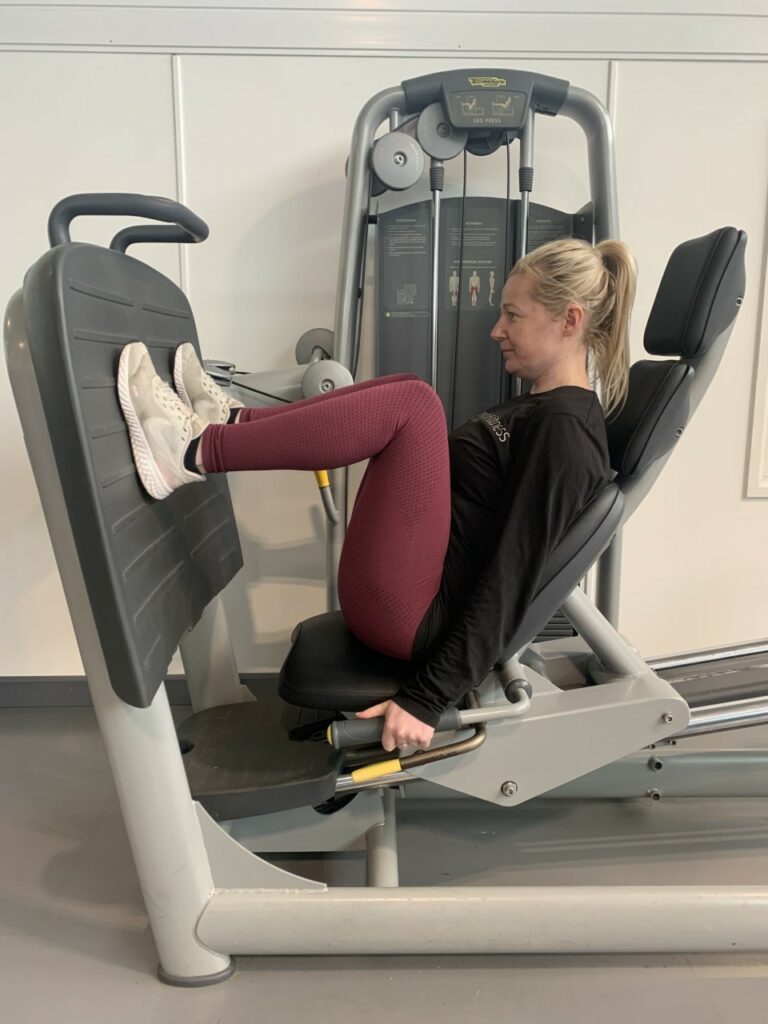

Foot positions – your foot positioning on the leg press can be changed to target different muscles.
Wider foot placement will target your adductors (inner thigh) more.
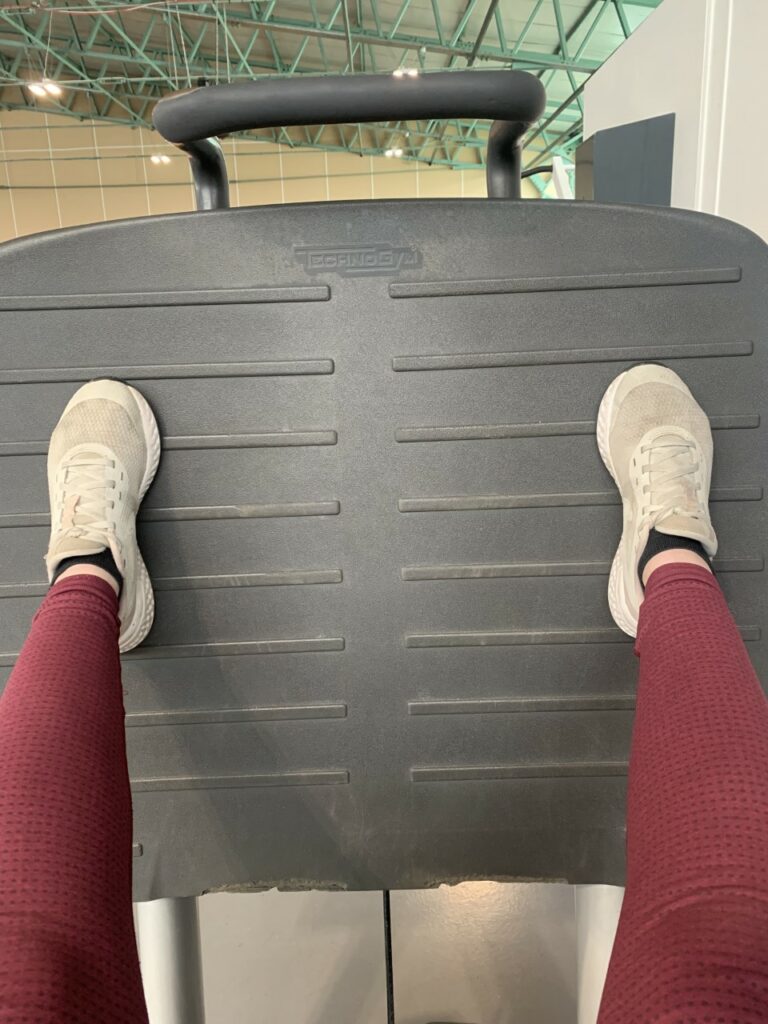
Narrow foot placement will target your abductors (outer thigh) more.
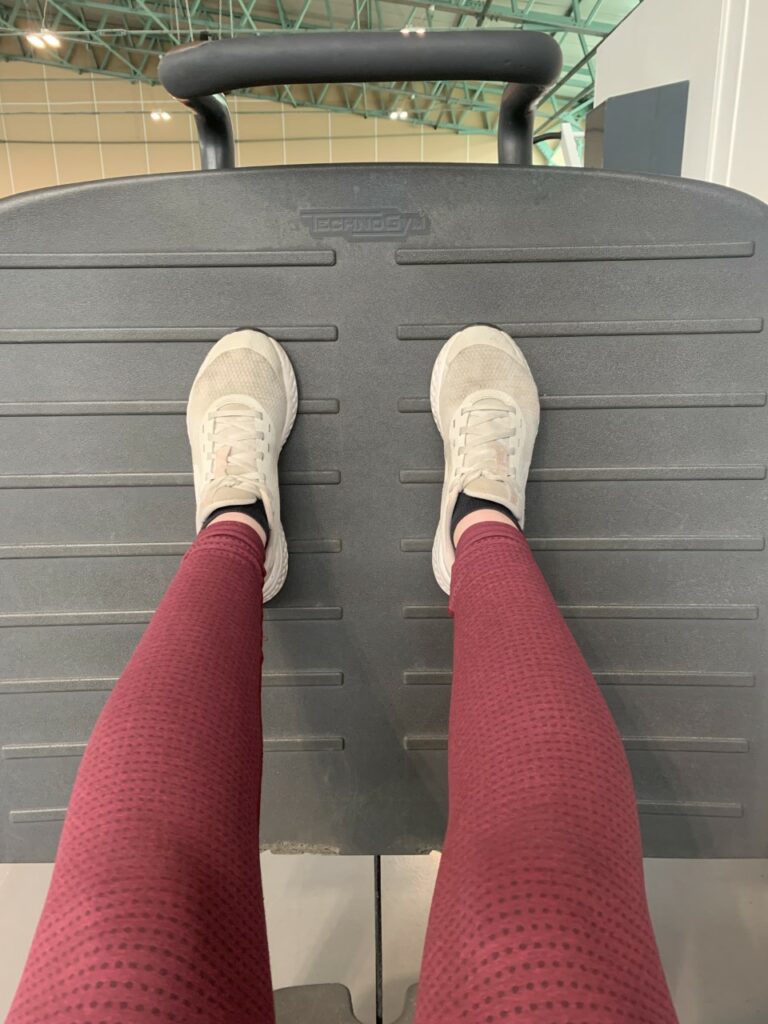
High foot placement will focus more on your glutes and hamstrings.
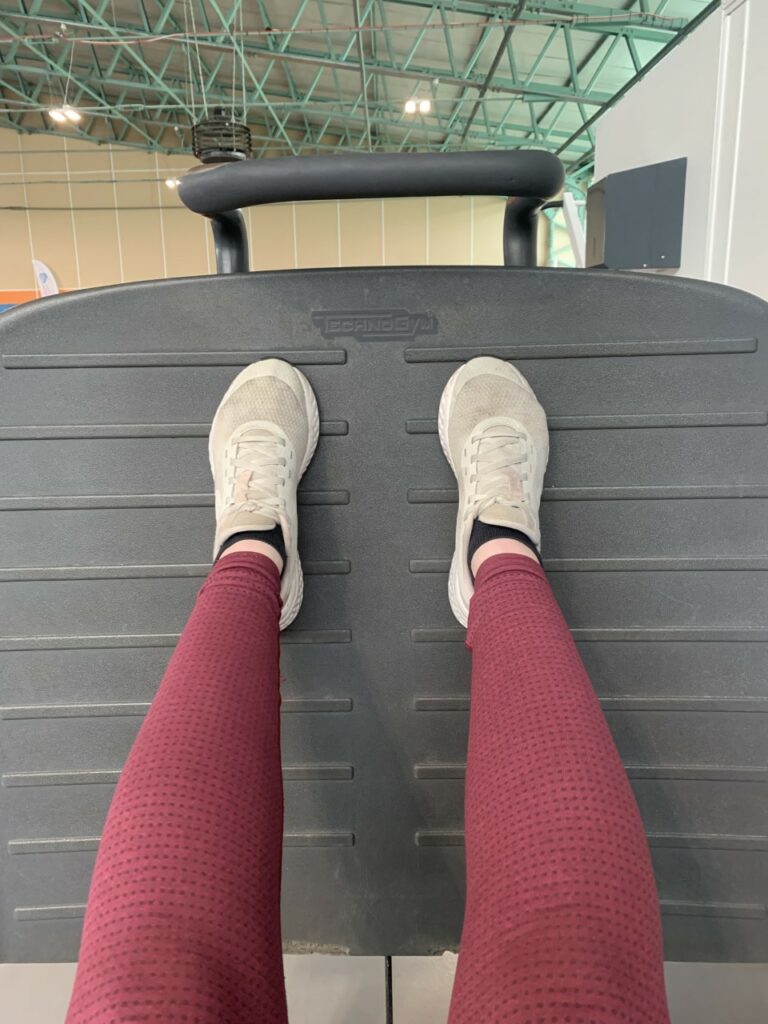
Low foot placement will focus more on your quads (take care with this one as it can put extra stress on the knees)
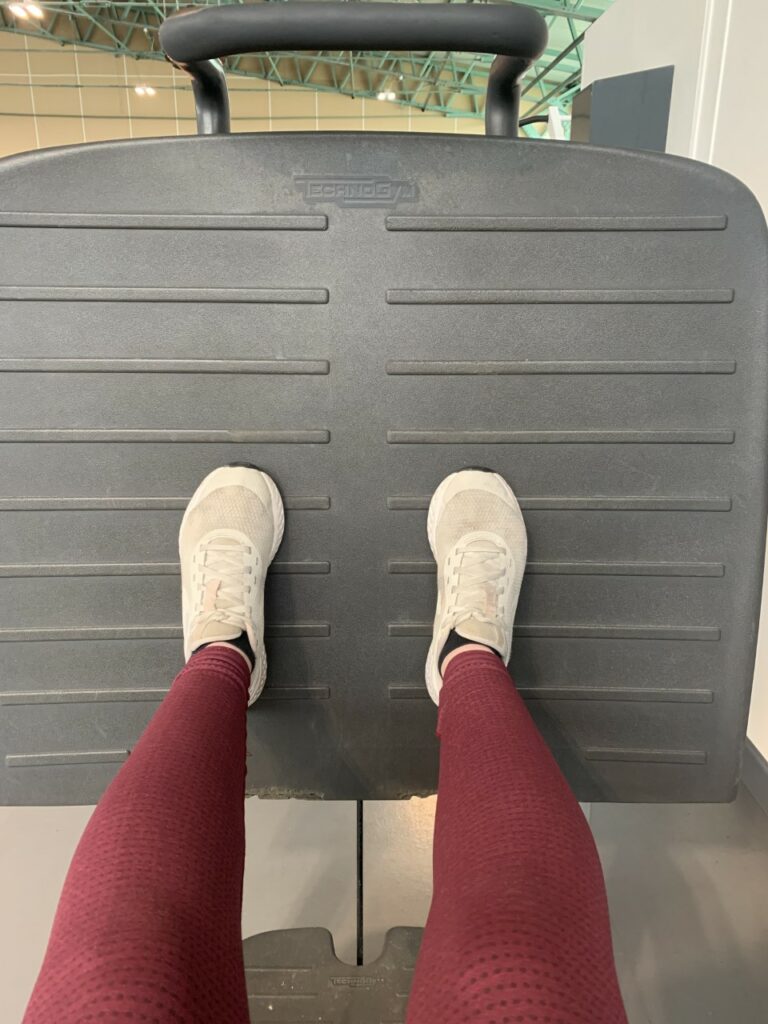
Unilateral means working both sides individually which help to overcome imbalances and work on a slightly weaker side. This can also be done on the leg press by single leg pressing which is done with just one foot on the plate to ensure that one leg is doing all the work.
Form focus
- Make sure you keep yourself fully in the seat and don’t round your back – use the handles to help keep yourself planted.
- Don’t fully lock your knees at the top of the movement – this will help keep them protected from any unnecessary pressure.
- Make sure you use the maximum range possible to get the most out of the movement – get as low as you can at the bottom.
For any help on the leg press or to check you are getting the most out of it, just ask one of the gym team!

